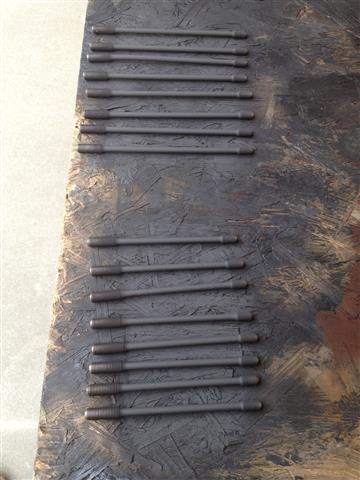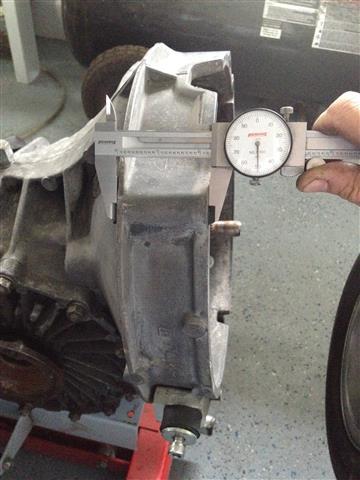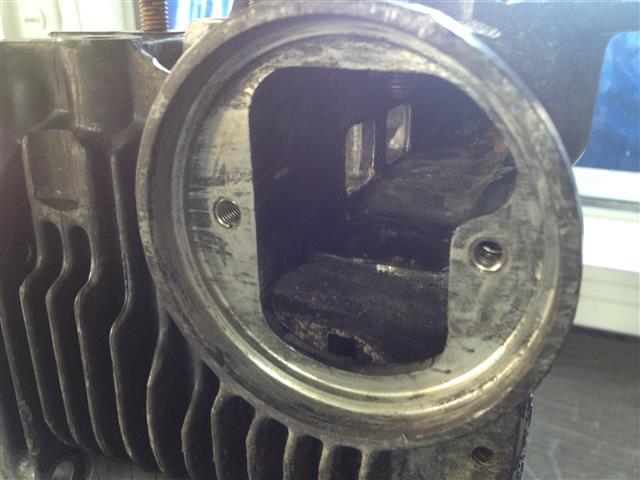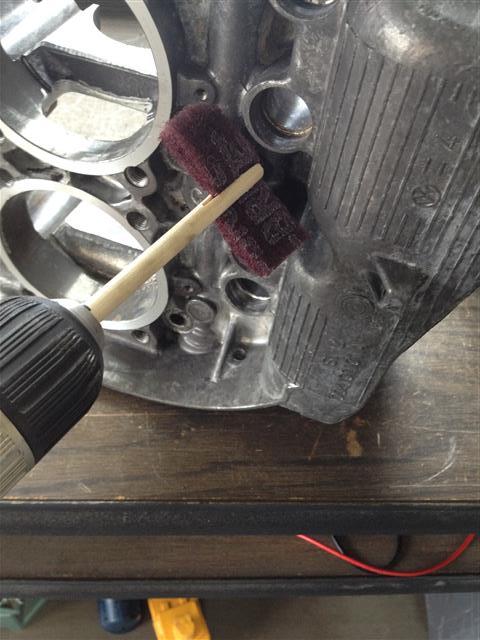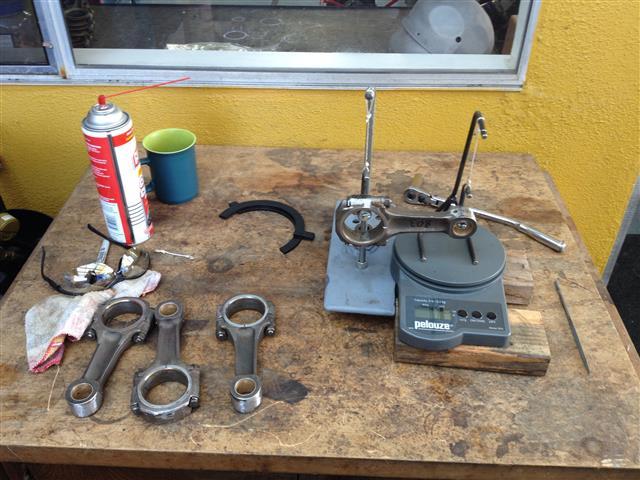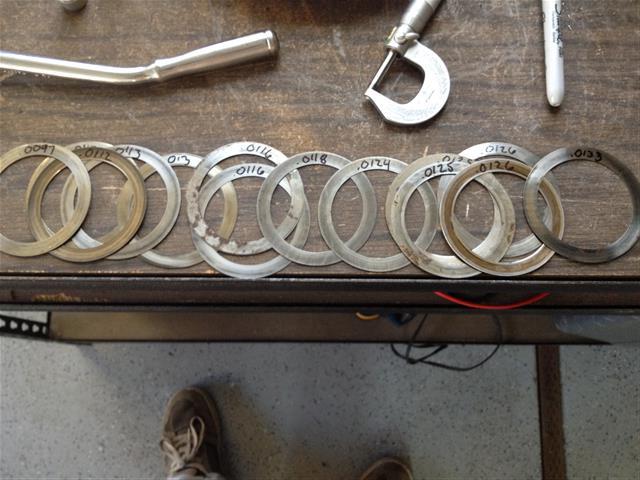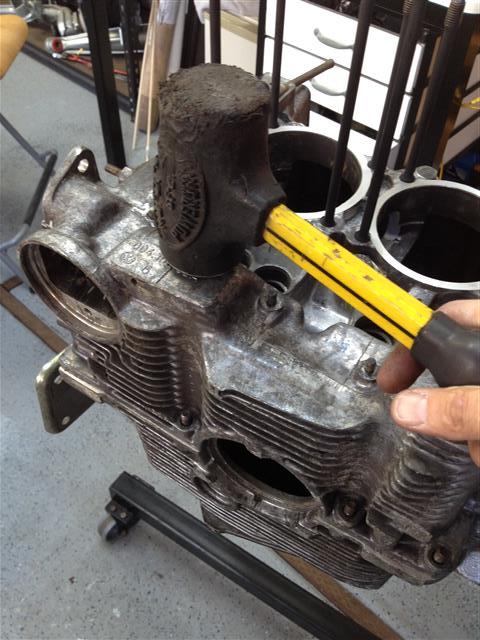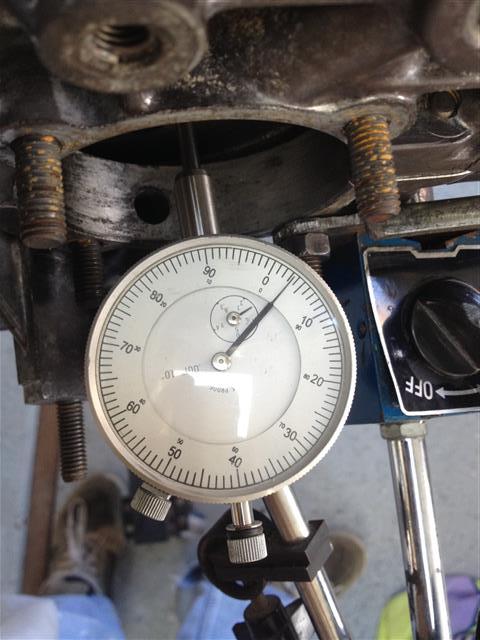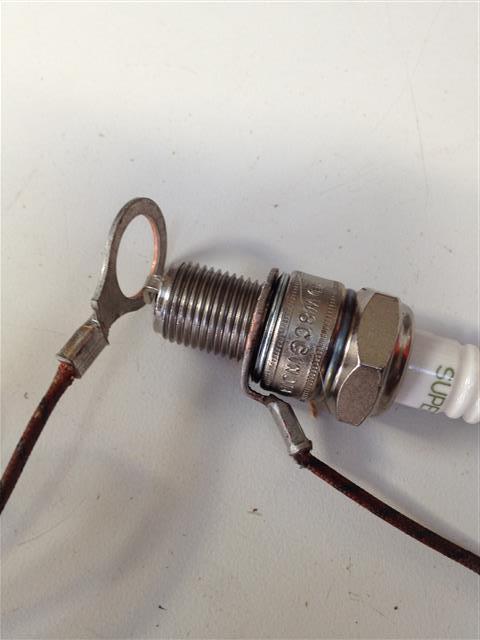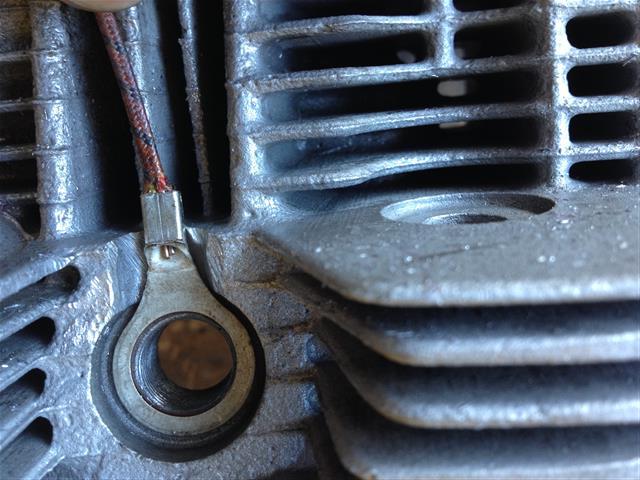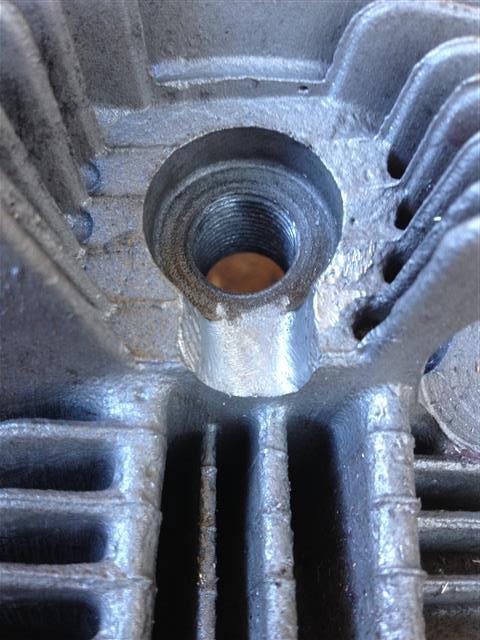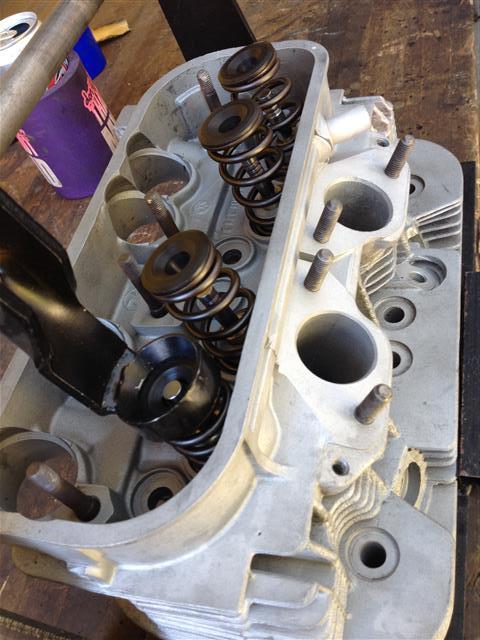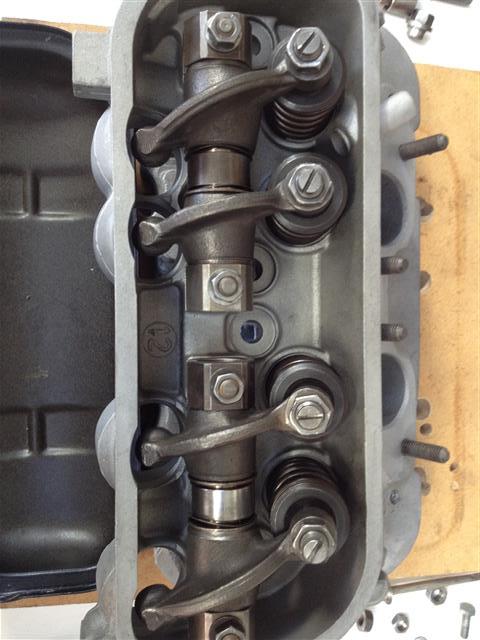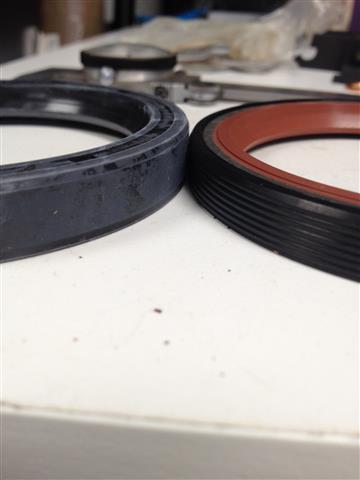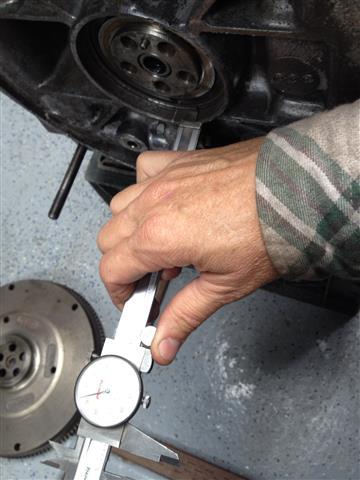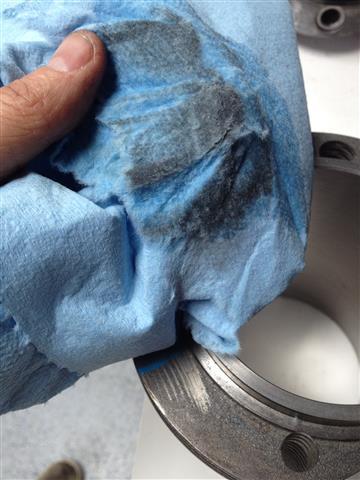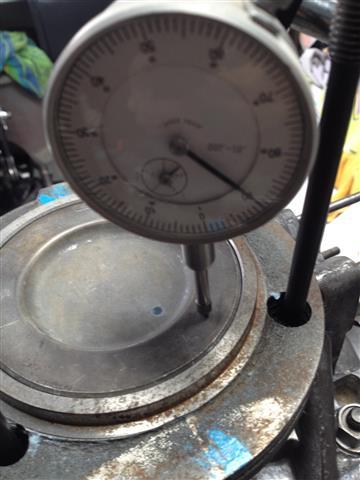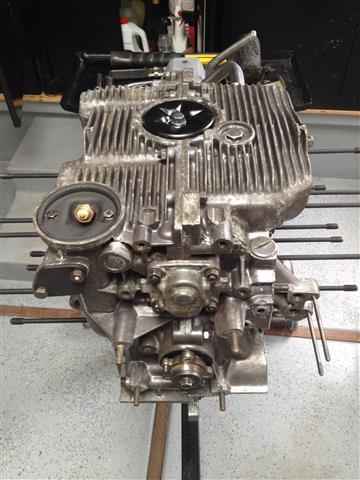This shows the Vanagon flywheel mount bolts I mentioned earlier.
There is not enough room around the heads of the bolts to use the earlier serrated shoulder bolts.

You can see the paint mark the machinist used for reference during balancing.
There are a few small holes drilled in the side (forgot to take a pic).
Robert at Schroeder's soda blasted my pressure plate when he did the balance job for me.
Seems a safe enough technique, and he's an automotive machinist by trade, who does this a lot, so I guess i'm stoked.
Pretty, too...
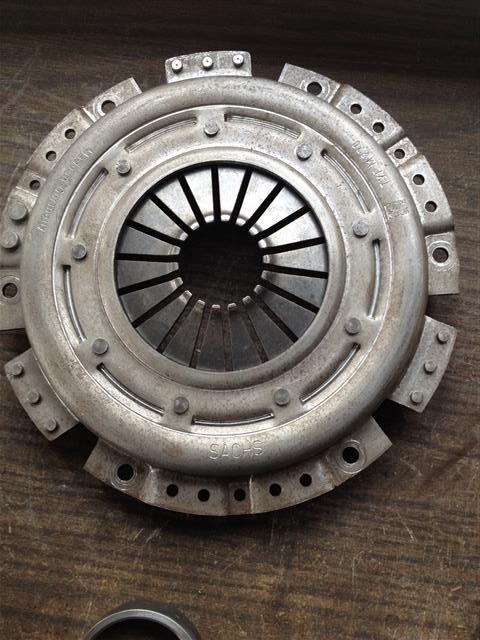
He said the PP didn't require any balance work.
Which is a good reference for the German Sachs PP.
The last Kennedy PP I had done had these large areas of material removed:

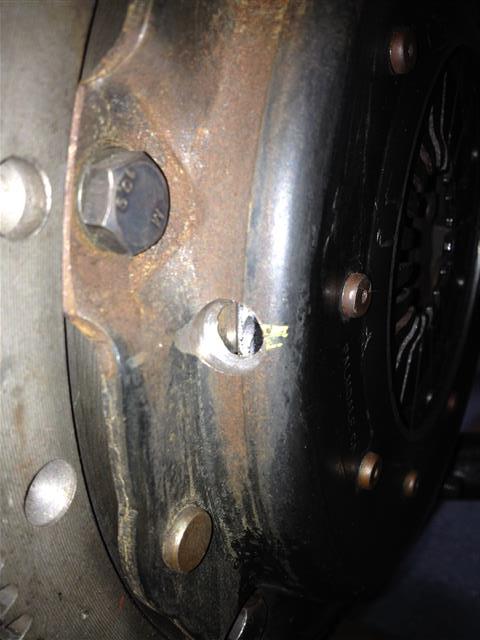
The oil pump accidentally went off to glass bead. Woops.
Going to have to clean/shine it up because the aluminum got embedded a bit.
However...
It does show how the scoring was shallow enough that the blasting cleaned it up.
Probletunity!
A cool experiment nonetheless, reinforces my notion of these pumps being re-usable.

If ever you are at a swap meet, or digging thru a box of bearings,
Here is a shot of Type 1 (top) and Type 4 (bottom).
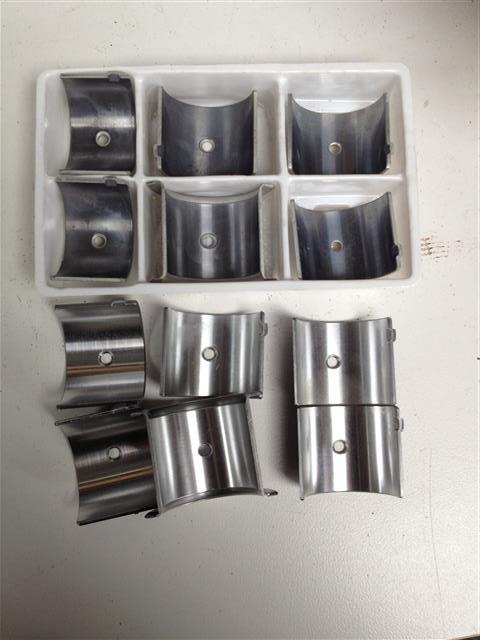
The Type 4 bearings are all very close in size, unlike the Type 1s that have a couple of significantly smaller ones.
Speaking of a box of bearings...
Like my label?
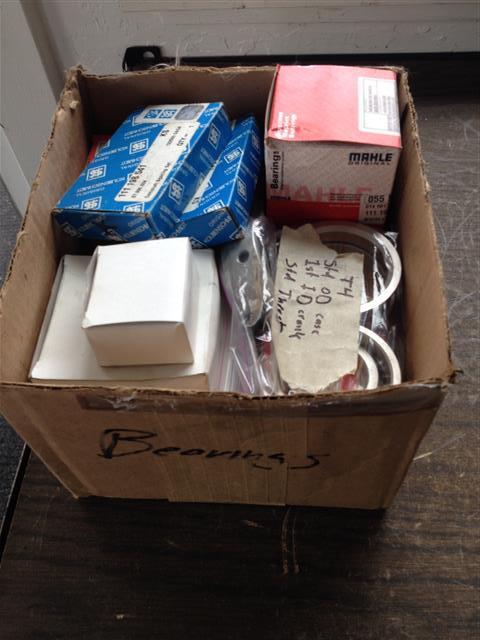
This leads me to this discussion:
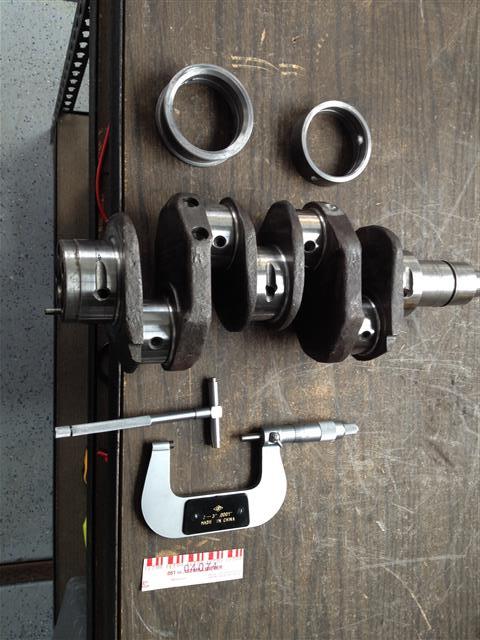
Yes, snap gauges are lame. Hate 'em...
That bore gauge I showed before isn't mine, unfortunately.
Because measurements with snap gauges are a bit of a compromise,
We have not just the "belt and suspenders" approach using two different measurement methods,
Actually the "belt and suspenders and pants that fit in the first place" with three methods.
First off, I have a STD ID set of new bearings in that box that I try on, and carefully feel the fit, comparing it to the feel of the bearings we plan to use.
Like how a good mechanic can do a valve adjustment by feel, having both new and used bearings on a clean dry crank you can feel the measurement.
Then, the snap gauges are used until my mouth gets sore from screwing it up during measuring...
And finally, the Plasti-gauge gets used on the center main.
If all of these measurements yield the same or similar results, then we can assume that our numbers are reasonable within a few tenths.
With the (heavily) polished crank, and used bearings that were scuffed, you can guess that the fit would be loose.
The measurement is getting a couple tenths above .004", which is a bit over the largest spec (.004) for new parts per the Bentley.
However, the wear limit for the mains is .007", so I'm a gunna run 'em...
Once the commitment was made, all was cleaned up, and the crank gear installation can commence.
Have to wait until Mom is at work to use the toaster oven...
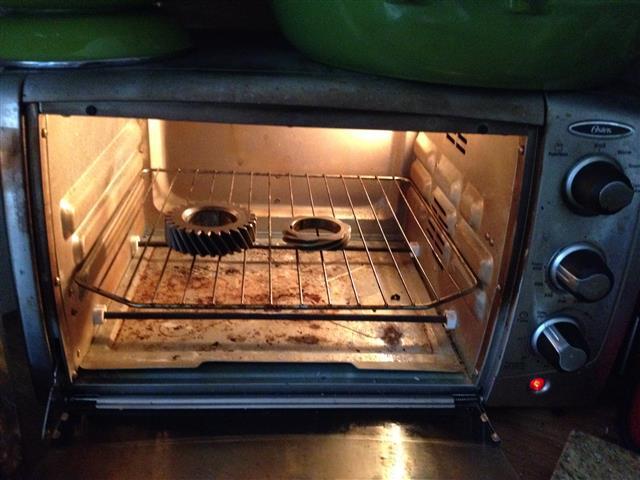
I like to use the crank holder for install, but a flywheel works just as well.
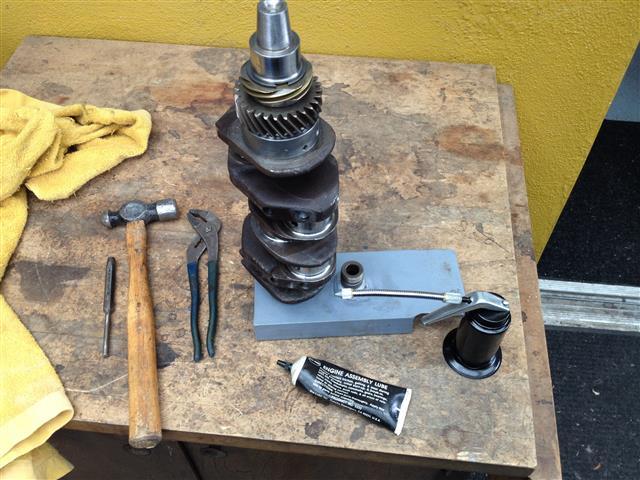
These internal flat-face expanding pliers were cheap at Sears.
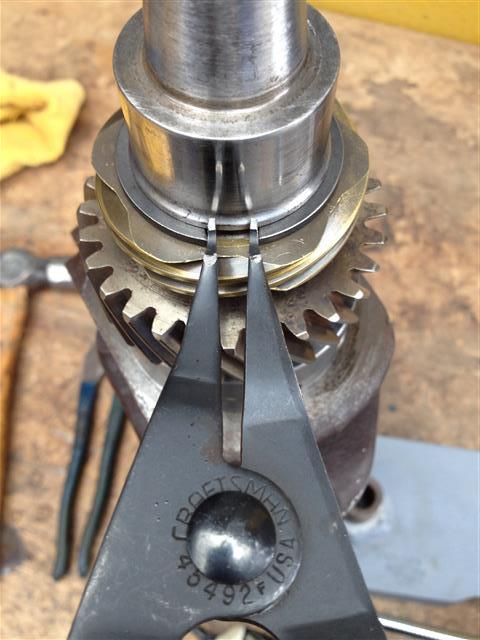
To jump around even more - here's a sign of the times...
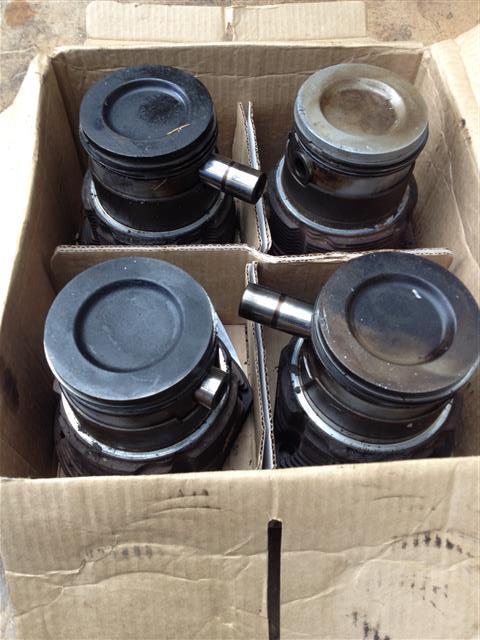
WhooHoo! A big score! some used, worn old bus pistons!
Just the kind of stuff we always just threw away back in the day.
Ironically enough, I traded something for them we always used to throw away; a thermostat!
Thermostats are now getting somewhat rare now for just this reason..
Junk for junk!
However,
One man's junk is another man's garbage!
Check me out.... Those part numbers make these actually a real score!
OG German OEM cylinders, folks... Go try and find a set of these.
These will get bored to 96 and given a set of Keith Black pistons.
Or maybe some forged J&Es??
Not a broken fin to be found, and a matched set,
Seasoned for decades, and made of the best ductile iron material.
I put one from one set I have, next to another from a different set,
To show slight differences in markings.
All from each set were marked the same as the others in the same set, FWIW.

039 101 301C I'm going to go and get that tattooed on my arm...



